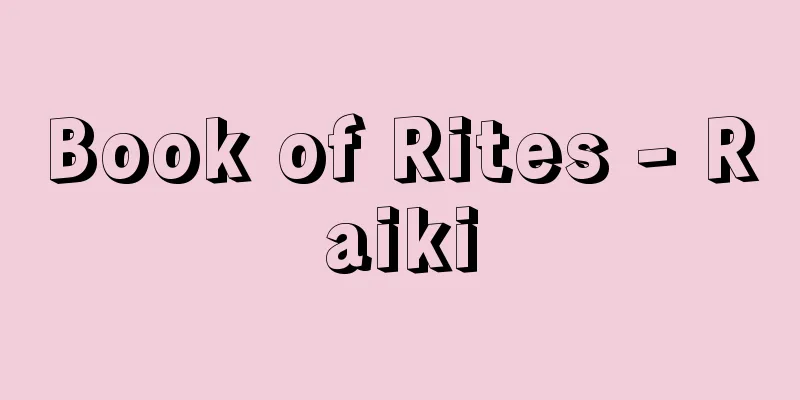Mol

|
...On the other hand, from the second half of the 19th century, with the development of chromatic harmony, the distinction between major and minor keys became ambiguous. The German words Dur (major) and Moll (minor) come from the Latin durus (hard) and mollis (soft). *Some of the terminology that mentions "Moll" is listed below. Source | Heibonsha World Encyclopedia 2nd Edition | Information |
|
…一方,19世紀後半からは半音階的和声法の発展に伴って,長調・短調の区別自体があいまいとなっていった。 なお,ドイツ語のドゥアDur(長調),モルMoll(短調)は,ラテン語の〈堅いdurus〉,〈柔らかいmollis〉からきている。 ※「Moll」について言及している用語解説の一部を掲載しています。 出典|株式会社平凡社世界大百科事典 第2版について | 情報 |
>>: Moll, A. (English spelling) MollA
Recommend
Necrosis -
This refers to the localized death of tissues in ...
thermopause
...The upper atmosphere, from 90 km to 500 km abo...
Sucre (English spelling)
The constitutional capital of Bolivia. It is also ...
Onifutoi - Onifutoi
...As for the S. genus, even in China, the S. ser...
Bank of Japan deposits
Current account deposits (Bank of Japan Act, Artic...
Appen, K.von (English spelling) AppenKvon
…His work with the Berliner Ensemble won worldwid...
Kaminoirōgawa River
...A river that flows almost southwest through th...
Aloe piransii - Aloe piransii
… They can be roughly divided into two groups: st...
indoor hockey
…The game lasts 35 minutes each, with a 5-10 minu...
Ichikawa stop - Ichikawa stop
...After this, in 1924, Hagiwara Masaga invented ...
Oceanicity - Kaiyodo (English spelling)
An index that quantitatively indicates the degree ...
Betty Boop
The sexiest heroine in the history of American sho...
Offutt Air Force Base
…Boys Town, a self-governing village for orphans ...
Entry into the Imperial Court - Judai
The entry of an empress into the Imperial Palace....
Feminism - feminism
The word originates from the Latin femina (woman)...









